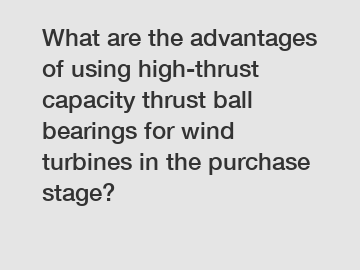Types of Butterfly Valves and Their Functions
Butterfly valves are versatile flow control devices widely used in various industries. They are available in different types, each designed to meet specific application requirements. Understanding the various types of butterfly valves and their functions can help in selecting the most suitable valve for a particular system. Let's explore the different types of butterfly valves and their functions in more detail:

Concentric Butterfly Valves:
Concentric butterfly valves are the most common type and feature a resilient seat with a metal disc centered on the valve stem. They offer excellent sealing capabilities and are suitable for a wide range of applications, including HVAC systems, water treatment plants, and general industrial processes. The concentric design provides a tight shut-off, and the resilient seat ensures reliable sealing even in low-pressure applications.
Double Offset Butterfly Valves:
Double offset butterfly valves have a slightly offset disc that enables a cam-like motion during operation. This design reduces friction and wear on the seat, resulting in increased longevity and improved sealing performance. Double offset butterfly valves are ideal for applications that require higher pressure ratings and tighter shut-off, such as oil and gas pipelines, chemical processing, and power plants.
Triple Offset Butterfly Valves:
Triple offset butterfly valves, also known as triple eccentric butterfly valves, are designed for demanding applications that require bubble-tight shut-off, high pressure, and high-temperature capabilities. They feature an asymmetrical disc geometry that creates a third offset, resulting in a cone-shaped seating surface. This design minimizes seat wear and achieves a reliable, zero-leakage performance. Triple offset butterfly valves are commonly used in oil and gas refining, petrochemical, and power generation industries.
High-Performance Butterfly Valves:
High-performance butterfly valves are specifically designed for applications that demand high flow rates, tight shut-off, and precise flow control. These valves often feature metal seats and a robust construction to withstand higher pressures and temperatures. High-performance butterfly valves are commonly used in industrial processes, water distribution, and wastewater treatment applications where optimal flow control and durability are crucial.
What are the advantages of using carbon steel?
Which U Joint Cross is the Ultimate Power Couple for Cars?
What are the advantages of buying custom FKM TC oil seals for sale from reliable manufacturers?
What are the advantages and disadvantages of butterfly valve?
Boost Efficiency & Precision: Unveiling the Ultimate Pipe Threading Lathe Machine!
Jiangsu Wujin Stainless Steel Pipe: Unraveling the Secrets Behind Its Unparalleled Quality and Durability
What is cylindrical roller bearing?
Wafer Butterfly Valves:
Wafer butterfly valves are lightweight and compact valves that fit between two flanges in a pipeline. They do not have a body lug or flange holes, reducing their weight and footprint. Wafer butterfly valves are cost-effective, easy to install, and suitable for applications where space is limited. They are commonly used in HVAC systems, water treatment plants, and low-pressure industrial applications.
Lug Butterfly Valves:
Lug butterfly valves have threaded inserts, or "lugs," on their outer diameter, which allow them to be installed in a pipeline using bolts. These valves provide bi-directional flow control and can be easily installed or removed from the pipeline without disrupting the entire system. Lug butterfly valves are commonly used in applications where frequent maintenance or inspection is required, such as water and wastewater treatment, chemical processing, and power plants.
Flanged Butterfly Valves:
Flanged butterfly valves have flanges on both ends, allowing them to be bolted directly between two flanges in a pipeline. They provide secure and reliable sealing and are suitable for applications that require easy installation and removal. Flanged butterfly valves are commonly used in a wide range of industries, including oil and gas, chemical processing, water distribution, and power generation.
Grooved Butterfly Valves:
Grooved butterfly valves have grooved ends that allow for quick and secure installation using grooved couplings. They are commonly used in fire protection systems, HVAC applications, and other industrial systems that require fast and easy assembly and disassembly.
In summary, there are various types of butterfly valves available to suit different application requirements. The selection of the appropriate type depends on factors such as pressure, temperature, flow rate, shut-off capabilities, and installation requirements. Whether it is a concentric butterfly valve for general industrial applications, a triple offset valve for high-pressure and high-temperature applications, or a wafer valve for space-constrained installations, understanding the types and functions of butterfly valves enables users to make informed decisions and optimize their flow control systems.
Explore more:Dual Disc Check Valves: Which Innovative Design Revolutionizes Flow Control?
What type of stainless steel is food grade?
How Do You Layout Radiant Tubing?
What is the purpose of casing centralizers?
How Do You Make a Tension Spring Stronger?
Ultimate Guide to EPDM Rubber Strips: 10 Must-Know Tips for Waterproofing & Weatherproofing!
How does investment casting differ from sand casting?










